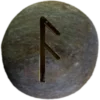Last Updated on December 1, 2024
Table of Contents


Regin (RAY-gin or REH-gin) was a skilled craftsman and a central figure in many legendary tales. He served as a master blacksmith, renowned for his unmatched ability to forge extraordinary weapons and tools. His name appears in the Völsunga Saga, where he plays a pivotal role in the story of Sigurd, a heroic dragon slayer.
Regin, also known as Reginn, was the son of the dwarf Hreiðmarr (HRAYTH-mar). His brothers, Fafnir and Ótr, shared his magical heritage. Regin’s wisdom and knowledge often guided those around him, although his motivations could be complex and self-serving. In the Völsunga Saga, Regin trained Sigurd and urged him to kill Fafnir, who had transformed into a dragon to guard a treasure hoard. This treasure included the cursed gold of Andvari, as well as the powerful ring Andvaranaut.
Regin’s most famous creation was the reforging of the sword Gram (GRAHM), broken during a past betrayal. With Regin’s skills, the sword became sharp enough to split an anvil in two. Sigurd used Gram to slay Fafnir, fulfilling his destiny and altering the course of many lives. Despite his mentorship, Regin’s greed for the treasure led to his demise at Sigurd’s hands.
Regin’s legacy as a master craftsman and cunning figure endures in tales of heroism, betrayal, and the pursuit of power. His story emphasizes the complexities of loyalty, ambition, and the cost of greed.
Runes Associated with Regin
The Ansuz Elder Futhark rune ![]() represents Regin’s wisdom and guidance. Its connection to divine communication mirrors his mentoring role in Sigurd’s journey. The Kenaz rune symbolizes craftsmanship and creation, reflecting his mastery in forging weapons and shaping destiny. Together, these runes embody Regin’s intelligence, skill, and influence.
represents Regin’s wisdom and guidance. Its connection to divine communication mirrors his mentoring role in Sigurd’s journey. The Kenaz rune symbolizes craftsmanship and creation, reflecting his mastery in forging weapons and shaping destiny. Together, these runes embody Regin’s intelligence, skill, and influence.
Regin’s Importance to Asatruar
To Asatruar, Regin represents the balance of wisdom and ambition. He reminds followers to honor craftsmanship, while understanding its power. His story warns of unchecked greed and the consequences of betrayal, offering lessons in balance and purpose. Regin’s connection to forging tools and shaping fate resonates with modern practitioners, emphasizing personal skill and dedication.


